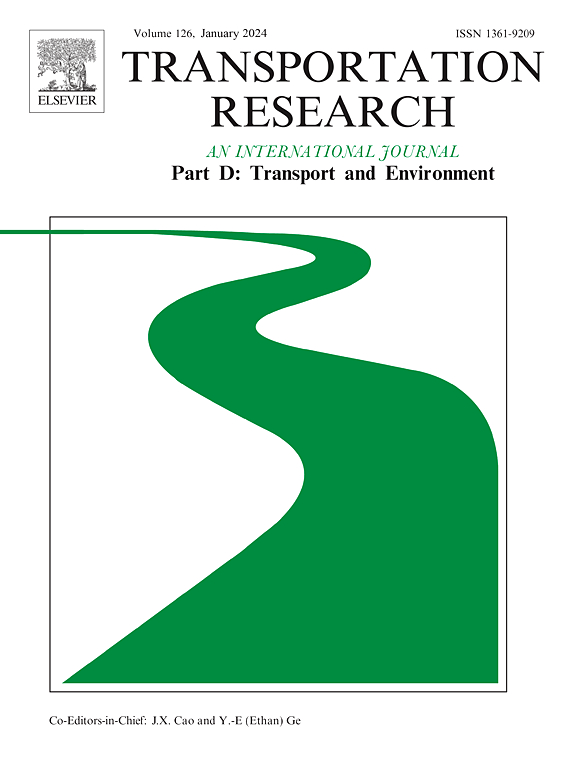将公平纳入新流动性的成本效益评估:比较分析
IF 7.7
1区 工程技术
Q1 ENVIRONMENTAL STUDIES
Transportation Research Part D-transport and Environment
Pub Date : 2025-08-22
DOI:10.1016/j.trd.2025.104959
引用次数: 0
摘要
郊区的公共交通面临着提供高效机动性的挑战。结合按需移动(TIMOD)服务的公共交通已成为一种潜在的解决方案,但公平性方面的考虑仍未得到充分探讨。本研究将公平性纳入TIMOD服务的成本效益评估,分析了西雅图大都市区两个实施TIMOD服务的郊区。使用分配成本效益分析(DCEA),我们评估了TIMOD、固定路线交通和单独驾驶在不同收入群体和建筑环境中的比较成本。研究表明,尽管TIMOD服务为低收入旅行者提供了公平的福利,但在人口密集、低收入的郊区,它们更为公平。相比之下,它们的成本效益在富裕的低密度地区更为有限。这些见解强调了对TIMOD干预措施进行具体情况规划的重要性,并为运输机构使用DCEA等工具,以便在能够最大化社会福利和减少运输不平等的地区优先部署此类服务。本文章由计算机程序翻译,如有差异,请以英文原文为准。
Incorporating equity into the cost-effectiveness evaluation of new mobility: A comparative analysis
Public transportation in suburban areas faces challenges in providing efficient mobility. Transit Incorporating Mobility on Demand (TIMOD) services have emerged as a potential solution, yet equity considerations remain underexplored. This study incorporates equity into the cost-effectiveness evaluation of TIMOD services, analyzing two suburban areas in the Seattle metropolitan region where a TIMOD service is implemented. Using distributional cost-effectiveness analysis (DCEA), we assess the comparative costs of TIMOD, fixed-route transit, and drive-alone across different income groups and built environments. The study shows that although TIMOD services offer equity benefits for lower-income travelers, they are more equitable in high-density, low-income suburbs. In contrast, their cost-effectiveness is more limited in affluent, low-density areas. These insights highlight the importance of context-specific planning for TIMOD interventions and employ tools such as DCEA for transit agencies to prioritize the deployment of such services in areas where they can maximize social welfare and reduce transportation inequities.
求助全文
通过发布文献求助,成功后即可免费获取论文全文。
去求助
来源期刊
CiteScore
14.40
自引率
9.20%
发文量
314
审稿时长
39 days
期刊介绍:
Transportation Research Part D: Transport and Environment focuses on original research exploring the environmental impacts of transportation, policy responses to these impacts, and their implications for transportation system design, planning, and management. The journal comprehensively covers the interaction between transportation and the environment, ranging from local effects on specific geographical areas to global implications such as natural resource depletion and atmospheric pollution.
We welcome research papers across all transportation modes, including maritime, air, and land transportation, assessing their environmental impacts broadly. Papers addressing both mobile aspects and transportation infrastructure are considered. The journal prioritizes empirical findings and policy responses of regulatory, planning, technical, or fiscal nature. Articles are policy-driven, accessible, and applicable to readers from diverse disciplines, emphasizing relevance and practicality. We encourage interdisciplinary submissions and welcome contributions from economically developing and advanced countries alike, reflecting our international orientation.

 求助内容:
求助内容: 应助结果提醒方式:
应助结果提醒方式:


